Al Sudani struggles to maintain Iraq’s political stability
9 May 2024

Iraq’s Prime Minister Mohammed Al Sudani is now more than halfway through his term. While there have been some notable economic developments, such as the massive energy deal with TotalEnergies signed in July 2023, his main accomplishment may well be maintaining a fragile political settlement.
When he took office in late October 2022, it ended a year of tense political infighting following the 2021 election. The next national poll is expected in October 2025, but while the government itself may appear secure, Iraqi politics is as turbulent as ever.
The Council of Representatives has not had a permanent speaker since November, when Mohammed Al Halbousi was dismissed by the Federal Supreme Court and forced to step away from parliament. Mohsen Al Mandalawi was named acting speaker, but fierce debate continues over handing the job to anyone else on a more formal basis.
The latest figure to be proposed is Salem Al Issawi, who is backed by three Sunni blocs but opposed by the largest Sunni group, Al-Halbousi’s Taqaddum (Progress) party.
Under Iraq’s ‘muhasasa’ system of dividing the political spoils along religious and ethnic lines, the speaker’s job goes to a Sunni politician, while the federal presidency goes to a Kurd and the prime minister is Shia.
Al Sudani is now also facing a fresh challenge on the domestic front in the shape of a mooted return to the political scene by rival Shia leader Moqtada Al Sadr, who announced his retirement from frontline politics in August 2022. Earlier that year, he had pulled all his MPs from parliament, effectively handing power to Al Sudani’s Coordination Framework.
Al Sadr now looks set to change course. On 10 April, he renamed his organisation from the Sadrist Movement to the National Shiite Movement and further statements since then point to a possible return to the electoral battlefield. Given his past ability to mobilise large numbers of followers, he could have a significant impact on the next election and events leading up to it.
“Al Sadr maintains strong support from parts of the street, but it may prove difficult for him to reassert himself after ceding control over powerful institutions to the Coordination Framework,” said Winthrop Rodgers, an independent analyst focused on Iraq. “However, his return will certainly complicate dynamics within Shia politics.”
His likely return will also test Iranian influence on Baghdad. Tehran has been able to exert huge influence over Iraqi politics through its allied Shia politicians and militia groups, but Al Sadr has been the most prominent Shia figure to resist such ties in recent years.
Al Sudani has, though, been reaching out to other neighbours, too. In April, he hosted Turkish President Recep Tayyip Erdogan, who was making his first trip to the country since 2011. The visit resulted in more than 20 agreements and memoranda of understanding, including one covering the contentious issue of cross-border water resources, as well as security and trade. However, there was no sign of progress on re-opening an oil export pipeline from Iraqi Kurdistan to Turkey.
Trade route
Under Al Sudani, Baghdad and Ankara have also managed to get Abu Dhabi and Doha on board with the Development Road initiative, a $17bn plan to develop a 1,200km trade route from the Gulf through Iraq to Turkey and, from there, on to Europe. The UAE had previously thrown its weight behind the India-Middle East-Europe Economic Corridor initiative, launched in New Delhi in September – but that plan involves using Israeli ports.
“In light of the Gaza war, a trade route through Israel is unlikely to be something that many Gulf rulers want to be too closely associated with at the moment,” said one regional analyst.
For the Iraqi trade route to build up real momentum, the security situation around the country will need to improve further. While the Islamic State has been largely defeated, other pro-Iran groups continue to be active, including several that have banded together as the Islamic Resistance in Iraq (IRI).
Many of that umbrella group’s recent actions have been directed against Israel, including a cruise missile attack on 2 May, which targeted Tel Aviv. Such actions hold the potential for Iraq to be drawn into any expansion of the Israel-Hamas conflict, perhaps as a proxy battleground between Iran and Israel.
Other apparent IRI attacks have been directed at local targets, such as a drone attack on the Khor Mor gas field in the Kurdistan region in late April, which killed four Yemeni workers and forced UAE-based operator Dana Gas to suspend operations for several days.
Kurdistan election in doubt
Kurdistan, meanwhile, has other all-but-intractable political problems. Most recently, the Kurdistan Democratic Party (KDP) insisted it will not participate in the regional parliamentary election planned for 10 June – two years after it should have been held.
That stance was prompted by a Federal Supreme Court ruling in February that ended the practice of reserving 11 seats for minority groups including Turkmen, Christians and Armenians after ruling that the quota was “unconstitutional”. The MPs holding those seats had generally voted in step with the KDP – something that led its rival, the Patriotic Union of Kurdistan (PUK), and others to file a court case arguing that the communities were no longer properly represented.
The KDP has emerged as the largest party from every election in the region over the past two decades and its pledge to sit out this election creates a thorny issue for Baghdad, which is now in charge of the process – after the Supreme Court also ruled in February that oversight of the elections should be handed over from the Kurdish authorities to the federal Independent High Electoral Commission.
“If the KDP does not participate in the election, the Kurdistan Regional Government will effectively cease to function as a cohesive political entity; if Baghdad gives into the KDP’s gamesmanship, it sets a bad precedent that a single party can prevent an election if it feels it will be disadvantaged,” said Rodgers.
No solution has been found as yet. Kurdistan region president Nechirvan Barzani was in Tehran on 6 May, where he held talks with Iranian President Ebrahim Raisi and Supreme Leader Ali Khamenei, among others. Trade and cross-border security issues were at the top of the agenda, but some reports suggested Barzani had also tried to persuade Tehran to put pressure on the PUK to agree to a delay to the June poll.
On 8 May, a further element of chaos was leant to the proceedings when the High Electoral Commission suspended preparation for the Kurdish election in response to a lawsuit filed by the KDP over the distribution of constituencies.
Together, the prospect of a major rival Shia bloc returning to Baghdad politics ahead of the 2025 Iraqi parliamentary election and the risk of the breakdown of the political process in Kurdistan threaten to disrupt the relative political calm that Al Sudani has worked to cultivate. Handling the shifting political landscape will require astuteness.
Image: مكتب اعلامي لرئيس الوزراء, CC BY-SA 4.0, via Wikimedia Commons
Exclusive from Meed
-
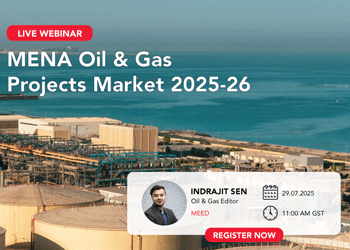 WEBINAR: Mena Oil & Gas Projects Market 2025-26
WEBINAR: Mena Oil & Gas Projects Market 2025-2610 July 2025
-
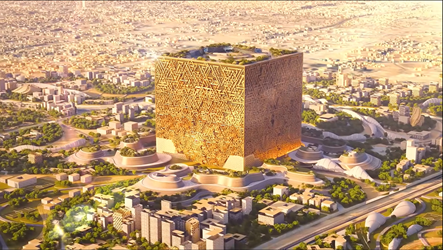
-
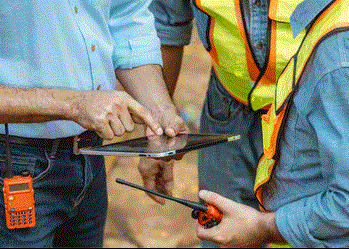 Chinese firm wins Mid Island Parkway tunnelling deal
Chinese firm wins Mid Island Parkway tunnelling deal10 July 2025
-
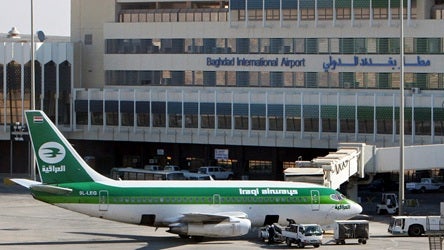 Iraq tenders Baghdad airport PPP project
Iraq tenders Baghdad airport PPP project9 July 2025
-
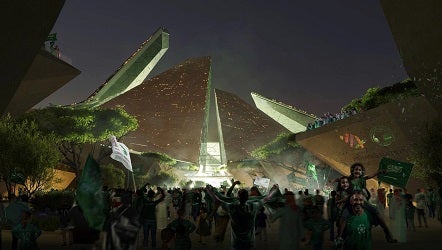
All of this is only 1% of what MEED.com has to offer
Subscribe now and unlock all the 153,671 articles on MEED.com
- All the latest news, data, and market intelligence across MENA at your fingerprints
- First-hand updates and inside information on projects, clients and competitors that matter to you
- 20 years' archive of information, data, and news for you to access at your convenience
- Strategize to succeed and minimise risks with timely analysis of current and future market trends

Related Articles
-
 WEBINAR: Mena Oil & Gas Projects Market 2025-26
WEBINAR: Mena Oil & Gas Projects Market 2025-2610 July 2025
Date & Time: Tuesday 29 July 2025 | 11:00 AM GST
Agenda:
1. Summary of the Mena oil, gas and petrochemicals projects market
2. Summary description of the main megaprojects, including project programmes
3. Analysis of active contracts and spending to date
4. Analysis of top contracts by work already awarded
5. Long-term capital expenditure outlays and forecasts
6. Highlights of key contracts to be tendered and awarded over the next 18 months
7. Top contractors and clients
8. Breakdown of spending by segment, ie, oil, gas, petrochemicals – upstream, downstream, onshore and offshore
9. Q&A session
https://image.digitalinsightresearch.in/uploads/NewsArticle/14241705/main.gif -
 New Murabba signs up South Korean firm for design works
New Murabba signs up South Korean firm for design works10 July 2025
Register for MEED’s 14-day trial access
Saudi Arabia’s New Murabba Development Company (NMDC) has signed a memorandum of understanding (MoU) with South Korea’s Heerim Architects & Planners to explore further design works on assets at the 14 square-kilometre New Murabba downtown project.
According to an official statement: “Heerim Architects & Planners will explore distinctive architectural plans that complement the development’s masterplan, with special focus on anchor assets, linear parks and smart city features.”
New Murabba CEO Michael Dyke signed the agreement last week during the company’s Investment and Partnership Forum in Seoul.
At the event, NMDC also signed an MoU with South Korea’s Naver Cloud Corporation to explore technological solutions for delivering the New Murabba downtown project.
According to an official statement: “The three-year agreement covers exploring innovative technology and automation to support the delivery of New Murabba, including robotics, autonomous vehicles, a smart city platform and digital solutions for monitoring construction progress.”
NMDC is in Seoul to examine technological offerings, assess financing options and showcase the investment opportunities available for the New Murabba downtown development.
The statement added that the excavation works for The Mukaab, the centrepiece of the overall development, have now been completed.
The Mukaab is a Najdi-inspired landmark that will be one of the largest buildings in the world. It will be 400 metres high, 400 metres wide and 400 metres long. Internally, it will have a tower on top of a spiral base and a structure featuring 2 million square metres (sq m) of floor space designated for hospitality. It will feature commercial spaces, cultural and tourist attractions, residential and hotel units, and recreational facilities.
Downtown destination
The New Murabba destination will have a total floor area of more than 25 million sq m and feature more than 104,000 residential units, 9,000 hotel rooms and over 980,000 sq m of retail space.
The scheme will include 1.4 million sq m of office space, 620,000 sq m of leisure facilities and 1.8 million sq m of space dedicated to community facilities.
The project will be developed around the concept of sustainability and will include green spaces and walking and cycling paths to promote active lifestyles and community activities.
The living, working and entertainment facilities will be developed within a 15-minute walking radius. The area will use an internal transport system and will be about a 20-minute drive from the airport.
The downtown area will feature a museum, a technology and design university, an immersive, multipurpose theatre, and more than 80 entertainment and cultural venues.
 READ THE JULY 2025 MEED BUSINESS REVIEW – click here to view PDF
READ THE JULY 2025 MEED BUSINESS REVIEW – click here to view PDFUAE and Turkiye expand business links; Renewed hope lies on the horizon for trouble-beset Levant region; Gulf real estate momentum continues even as concerns emerge
Distributed to senior decision-makers in the region and around the world, the July 2025 edition of MEED Business Review includes:
> AGENDA: UAE-Turkiye trade gains momentum> INTERVIEW 1: Building on UAE-Turkiye trade> INTERVIEW 2: Turkiye's Kalyon goes global> INTERVIEW 3: Strengthening UAE-Turkiye financial links> INTERVIEW 4: Turkish Airlines plans further growth> CURRENT AFFAIRS: Middle East tensions could reduce gas investments> GCC REAL ESTATE: Gulf real estate faces a more nuanced reality> PROJECTS MARKET: GCC projects market collapses> INTERVIEW 5: Hassan Allam eyes role in Saudi Arabia’s transformation> INTERVIEW 6: Aseer region seeks new investments for Saudi Arabia> LEADERSHIP: Nuclear power makes a global comeback> LEVANT MARKET FOCUS: Levant states wrestle regional pressures> GULF PROJECTS INDEX: Gulf projects index continues climb> CONTRACT AWARDS: Mena contract award activity remains subdued> ECONOMIC DATA: Data drives regional projects> OPINION: A farcical tragedy that no one can endTo see previous issues of MEED Business Review, please click herehttps://image.digitalinsightresearch.in/uploads/NewsArticle/14239016/main.jpg -
 Chinese firm wins Mid Island Parkway tunnelling deal
Chinese firm wins Mid Island Parkway tunnelling deal10 July 2025

Register for MEED’s 14-day trial access
Beijing-headquartered China Railway Tunnel Engineering Group has won a $60m subcontract for the tunnelling works on package 1B of the Mid Island Parkway project in Abu Dhabi.
Package 1B entails the construction of a cut-and-cover tunnel to cross the Khor Laffan Channel, which is the area between the Saadiyat and Um-Yifeenah islands.
The tunnel, which will be between 900 metres and 1 kilometre (km) long, is being constructed on a design-and-build basis and will tie in to packages 1A and 1C.
The project is being jointly constructed by a joint venture of local firm Yas Projects (Alpha Dhabi Holding) and Beijing-based China Railway International Group.
In June last year, MEED exclusively reported that Abu Dhabi's Department of Municipality & Transport had awarded contracts for three packages for phase one of the Mid Island Parkway Project (MIPP), as part of the Plan Capital urban evolution programme.
Phase one will start at the existing Saadiyat Interchange, which will connect the E12 road to the MIPP, and will end with the recently constructed Um-Yifeenah Highway.
It comprises a dual main road with a total length of 8km, including four traffic lanes in each direction, two interchanges, a tunnel and associated infrastructure works.
MIPP phase one is further divided into packages 1A, 1B and 1C, which were awarded separately.
The project ownership has been transferred from Aldar Properties to Abu Dhaibi's Department of Municipalities & Transport.
Previously, it was transferred from Abu Dhabi General Services Company (Musanada) to Aldar Properties, and the project was included in the Abu Dhabi Investment Office's public-private partnership project pipeline.
 READ THE JULY 2025 MEED BUSINESS REVIEW – click here to view PDF
READ THE JULY 2025 MEED BUSINESS REVIEW – click here to view PDFUAE and Turkiye expand business links; Renewed hope lies on the horizon for trouble-beset Levant region; Gulf real estate momentum continues even as concerns emerge
Distributed to senior decision-makers in the region and around the world, the July 2025 edition of MEED Business Review includes:
> AGENDA: UAE-Turkiye trade gains momentum> INTERVIEW 1: Building on UAE-Turkiye trade> INTERVIEW 2: Turkiye's Kalyon goes global> INTERVIEW 3: Strengthening UAE-Turkiye financial links> INTERVIEW 4: Turkish Airlines plans further growth> CURRENT AFFAIRS: Middle East tensions could reduce gas investments> GCC REAL ESTATE: Gulf real estate faces a more nuanced reality> PROJECTS MARKET: GCC projects market collapses> INTERVIEW 5: Hassan Allam eyes role in Saudi Arabia’s transformation> INTERVIEW 6: Aseer region seeks new investments for Saudi Arabia> LEADERSHIP: Nuclear power makes a global comeback> LEVANT MARKET FOCUS: Levant states wrestle regional pressures> GULF PROJECTS INDEX: Gulf projects index continues climb> CONTRACT AWARDS: Mena contract award activity remains subdued> ECONOMIC DATA: Data drives regional projects> OPINION: A farcical tragedy that no one can endTo see previous issues of MEED Business Review, please click herehttps://image.digitalinsightresearch.in/uploads/NewsArticle/14238039/main3047.gif -
 Iraq tenders Baghdad airport PPP project
Iraq tenders Baghdad airport PPP project9 July 2025
Register for MEED’s 14-day trial access
Iraq’s Ministry of Transport and the General Company for Airport & Air Navigation Services have released a tender inviting firms to bid for a contract to develop Baghdad International airport on a public-private partnership (PPP) basis.
The notice was issued in July, and the submission deadline is in September.
According to an official statement posted on its website, Iraq’s Ministry of Transport said that 10 out of 14 international consortiums that expressed interest in the project earlier this year have been prequalified to compete for the tender.
The scope of the estimated $400m-$600m project involves rehabilitating, expanding, financing, operating and maintaining the airport. It is the first airport PPP project to be launched in Iraq.
The initial capacity of the airport is expected to be around 9 million passengers, which will be gradually increased to 15 million passengers.
The International Finance Corporation (IFC), a member of the World Bank Group, is the project’s lead transaction adviser.
Iraq is already developing the Baghdad and Najaf-Karbala metro projects using a similar PPP model.
Earlier this month, MEED reported that Iraq intends to retender the contract to develop and operate the Baghdad Metro project, following the award of the estimated $2.5bn contract last year.
According to local media reports, Nasser Al-Assadi, adviser to Prime Minister Mohammed Sudani, stated that the previous developers had overestimated the project budget; therefore, the government will relaunch the entire process to implement the project.
https://image.digitalinsightresearch.in/uploads/NewsArticle/14229008/main.jpg -
 Contractors prepare revised bids for Roshn stadium
Contractors prepare revised bids for Roshn stadium9 July 2025

Register for MEED’s 14-day trial access
Saudi gigaproject developer Roshn has invited firms to submit revised commercial proposals by 24 July for a contract to build a new stadium adjacent to the National Guard facilities to the southwest of Riyadh.
Known as the National Guard Stadium, it will be delivered on an early contractor involvement (ECI) basis. It will cover an area of over 450,000 square metres and be able to accommodate 46,000 spectators.
The scope of work also covers the construction of auxiliary facilities, including training academy offices and two hotels, as well as retail and food and beverage outlets.
The firms had initially submitted bids on 8 April for the contract.
The stadium is scheduled to host 32 Fifa World Cup tournament games in 2034.
In August last year, MEED reported that Saudi Arabia plans to build 11 new stadiums as part of its bid to host the 2034 Fifa World Cup.
Eight stadiums will be located in Riyadh, four in Jeddah and one each in Al-Khobar, Abha and Neom.
The proposal outlines an additional 10 cities that will host training bases. These are Al-Baha, Jazan, Taif, Medina, Al-Ula, Umluj, Tabuk, Hail, Al-Ahsa and Buraidah.
The bid proposes 134 training sites across the kingdom, including 61 existing facilities and 73 new training venues.
The kingdom was officially selected to host the 2034 Fifa World Cup through an online convention of Fifa member associations at the Fifa congress on 11 December 2024.
 https://image.digitalinsightresearch.in/uploads/NewsArticle/14228507/main.jpg
https://image.digitalinsightresearch.in/uploads/NewsArticle/14228507/main.jpg

